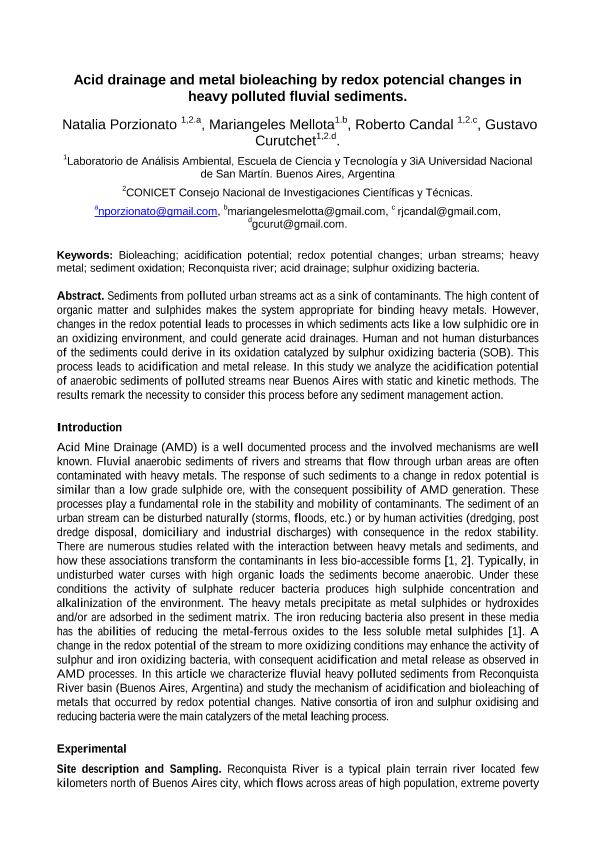Artículo
Acid drainage and metal bioleaching by redox potencial changes in heavy polluted fluvial sediments
Porzionato, Natalia Florencia ; Mellota, Mariangeles; Candal, Roberto Jorge
; Mellota, Mariangeles; Candal, Roberto Jorge ; Curutchet, Gustavo Andres
; Curutchet, Gustavo Andres
 ; Mellota, Mariangeles; Candal, Roberto Jorge
; Mellota, Mariangeles; Candal, Roberto Jorge ; Curutchet, Gustavo Andres
; Curutchet, Gustavo Andres
Fecha de publicación:
08/2013
Editorial:
Trans Tech Publications
Revista:
Advanced Materials Research
ISSN:
1662-8985
Idioma:
Inglés
Tipo de recurso:
Artículo publicado
Clasificación temática:
Resumen
Sediments from polluted urban streams act as a sink of contaminants. The high content of organic matter and sulphides makes the system appropriate for binding heavy metals. However, changes in the redox potential leads to processes in which sediments acts like a low sulphidic ore in an oxidizing environment, and could generate acid drainages. Human and not human disturbances of the sediments could derive in its oxidation catalyzed by sulphur oxidizing bacteria (SOB). This process leads to acidification and metal release. In this study we analyze the acidification potential of anaerobic sediments of polluted streams near Buenos Aires with static and kinetic methods. The results remark the necessity to consider this process before any sediment management action.
Archivos asociados
Licencia
Identificadores
Colecciones
Articulos(INQUIMAE)
Articulos de INST.D/QUIM FIS D/L MATERIALES MEDIOAMB Y ENERGIA
Articulos de INST.D/QUIM FIS D/L MATERIALES MEDIOAMB Y ENERGIA
Articulos(SEDE CENTRAL)
Articulos de SEDE CENTRAL
Articulos de SEDE CENTRAL
Citación
Porzionato, Natalia Florencia; Mellota, Mariangeles; Candal, Roberto Jorge; Curutchet, Gustavo Andres; Acid drainage and metal bioleaching by redox potencial changes in heavy polluted fluvial sediments; Trans Tech Publications; Advanced Materials Research; 825; 8-2013; 496-499
Compartir
Altmétricas



